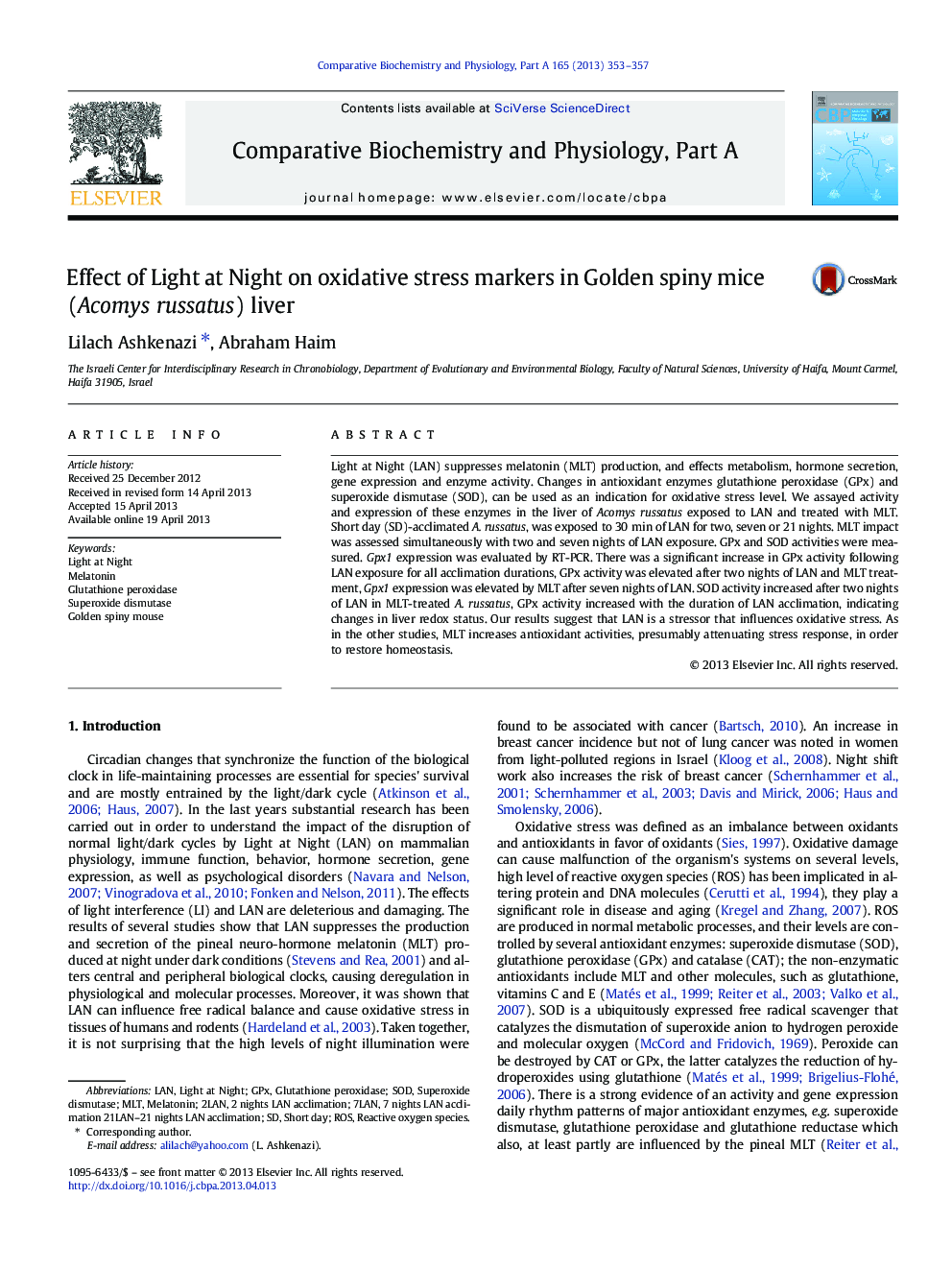| Article ID | Journal | Published Year | Pages | File Type |
|---|---|---|---|---|
| 10818903 | Comparative Biochemistry and Physiology Part A: Molecular & Integrative Physiology | 2013 | 5 Pages |
Abstract
Light at Night (LAN) suppresses melatonin (MLT) production, and effects metabolism, hormone secretion, gene expression and enzyme activity. Changes in antioxidant enzymes glutathione peroxidase (GPx) and superoxide dismutase (SOD), can be used as an indication for oxidative stress level. We assayed activity and expression of these enzymes in the liver of Acomys russatus exposed to LAN and treated with MLT. Short day (SD)-acclimated A. russatus, was exposed to 30Â min of LAN for two, seven or 21 nights. MLT impact was assessed simultaneously with two and seven nights of LAN exposure. GPx and SOD activities were measured. Gpx1 expression was evaluated by RT-PCR. There was a significant increase in GPx activity following LAN exposure for all acclimation durations, GPx activity was elevated after two nights of LAN and MLT treatment, Gpx1 expression was elevated by MLT after seven nights of LAN. SOD activity increased after two nights of LAN in MLT-treated A. russatus, GPx activity increased with the duration of LAN acclimation, indicating changes in liver redox status. Our results suggest that LAN is a stressor that influences oxidative stress. As in the other studies, MLT increases antioxidant activities, presumably attenuating stress response, in order to restore homeostasis.
Keywords
Related Topics
Life Sciences
Biochemistry, Genetics and Molecular Biology
Biochemistry
Authors
Lilach Ashkenazi, Abraham Haim,
